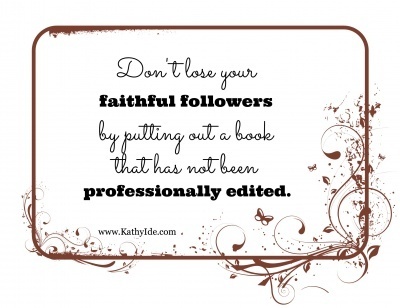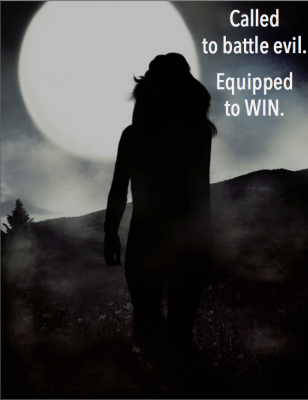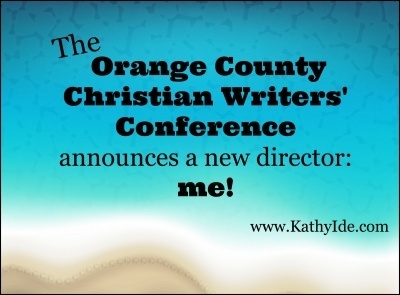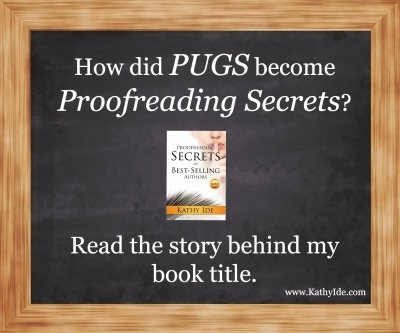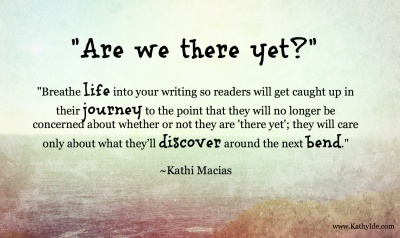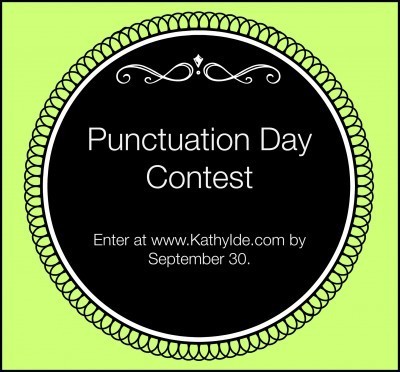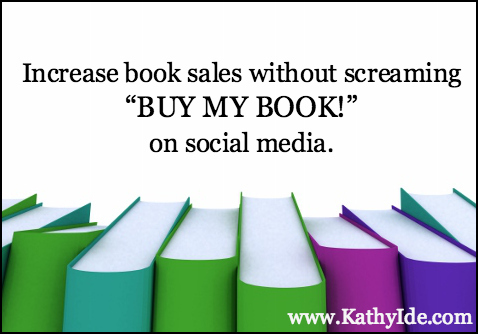Kathy Ide's Blog, page 27
November 3, 2014
EVEN BEST-SELLING AUTHORS NEED GOOD EDITING
“You know, I’ve always been a huge fan of hers. I’ve read every book she’s ever written and loved them all. Until this last one.”
My heart sank as I heard those words from the director of a writers’ conference I’d just spoken at. She was referring to an author I dearly loved myself: one of my all-time favorite authors and someone I’d met at several conferences and knew to be a sweet, lovely woman.
“The concept was intriguing,” she went on. “But it was so poorly edited and filled with mistakes, I couldn’t get into the story.”
“Do you know who published it?” I asked.
She got out her cell phone. Moments later, she confirmed what I had expected.
“That’s a subsidy publisher,” I explained. And not a small startup press. This company had been in business for years and had a positive reputation among industry professionals. I’d recommended it myself to several of my own author-clients.
“Didn’t anybody edit the book before they published it?” Her tone held incredulity.
I cringed at the thought that one of my most beloved authors had published something that had the potential to lose loyal fans instead of gaining new ones.
My friends, this story is not fictional! It actually happened, just as I related.
PLEASE DON’T LET THIS HAPPEN TO YOU!
If you’re a multi-published author with a huge fan base, and you’ve decided to dip your toes into the exciting new world of “indie” publishing, self-publishing, or “hybrid” publishing, please don’t risk losing your faithful followers by putting out a book that has not been as professionally edited as your traditionally published books.
I can help you maintain the level of editing professionalism you (and your readers) have grown accustomed to. For details, please check out http://kathyide.com/helping-authors/.
If you’re not a multi-published author (yet), I can help you too. Please check out http://kathyide.com/helping-writers/ to see what I can do for you.
I’m not the only professional freelance editor out there, and I’m not the perfect fit for every author and every book. So if you’d like some other options to choose from, check out the Christian Editor Connection. Just go to the website (www.ChristianEditor.com) and fill out the form for Authors Seeking Editors.
You’ll be doing your readers—and yourself—a huge favor by getting your manuscript professionally edited.
October 27, 2014
Forbidden Doors
I connected with friend/colleague Bill Myers at the Write to Inspire conference a few weeks ago. Bill is a best-selling author and an award-winning filmmaker. His children’s DVD and book series, McGee and Me, has sold 4.5 million copies and has been aired on ABC as well as in 80 countries. He has written, directed, and done voice work for Focus on the Family’s Adventures in Odyssey radio series and is the voice of Jesus in Zondervan’s NIV Audio Bible. Bill is also managing partner of Amaris Media, International, a motion picture and media company currently developing several projects for both children and adults.
Bill told me about a project he is currently working on that sounds so intriguing I wanted to share it with you. It’s a full-length feature film called Forbidden Doors, billed as “a hard-hitting supernatural thriller.” Based upon a series that won the C.S. Lewis Honor Award, the film is about two teens who return to California from the Amazon mission field only to discover that their classmates—in fact, the entire town—are caught up in dark, occult activity. Armed with only their understanding of Scripture, and learning as they go, the brother and sister battle the forces of darkness to set the captives free.
Much of the money to produce this movie has already been promised by investors. But Bill and the filmmaking team believe that God would be glorified if His whole church worked together to make it happen. So they’re looking to raise the remaining funds in a unique way: through a Kickstarter Campaign. You can check out the details here: http://kck.st/1rdb4UI.
Here’s a quote from the Kickstarter website for this project: “2014 has had an unusually large number of ‘faith-based’ films. Some work, some are cheesy. Forbidden Doors has teeth. It is not a film you’ll be embarrassed to take your friends to.”
That sounds good to me!
October 20, 2014
The OCC Writers’ Conference Has a New Director
The Orange County Christian Writers’ Conference in Southern California has a new director: me!
I’ve been part of this conference since it started almost thirty years ago. I’ve been on the faculty every year, and I’ve been on the board of directors since its inception a couple of years ago, when Antonio Crawford took over directing the conference. My job on the board has been to choose and invite faculty members, and make sure they’re well taken care of at the event.
A few weeks ago, Antonio told me that he and his wife, Gwendolyn, had been called into a ministry position that will take up a good portion of their time, and he asked if I would consider being the new director for the Orange County conference. To be honest, I was taken aback. The idea had never occurred to me. But Antonio told me he had observed my interaction with the faculty at the conference, and he had prayed about this decision, and he was confident that God was leading him to ask me.
He also assured me that he would be co-directing with me for the remaining months leading up to next year’s conference, gradually transferring responsibilities to me but not disappearing out of the picture altogether.
As I prayed about this, I sensed God leading me to accept. So I did.
It is certainly an honor, but it’s also a tremendous responsibility. I would greatly appreciate your prayers that God will work through me in this new position to accomplish His will for all those who come to the conference: faculty, attendees, volunteers, and special guests. I could not do this without faithful prayer support.
The 2015 conference will be held on Friday, April 24 (5:30–9:30), and Saturday, April 25 (8:00–5:00), at Trinity Presbyterian Church in Santa Ana, California. We have a fantastic line-up of faculty, including:
Terry Burns from Hartline Literary Agency
Kim Bangs, senior acquisitions editor for the Bethany and Chosen divisions of Baker Publishing Group
Aaron Gansky, representing Lighthouse Publishing of the Carolinas
Kathi Macias, representing Elk Lake Publishing
Dave Sheets, with Jerry B. Jenkins’s Christian Writers Guild/Believers Press
J. Taylor, representing Guideposts, Angels on Earth, and Mysterious Ways magazinesSharon Elliott with Gospel Roads
Tess Rutherford with Empowered magazine online
We’ll also have on faculty some terrific freelance authors and editors, including Mona Hodgson, Renae Brumbaugh Green, Donna Stanley, Kathy Bruins, Lane Ethridge, Nancy Sanders, Alex Marestaing, Eugene and Jewell Williams, Susan Osborn, Edie Glaser … and me.
All faculty members will be teaching workshops and will also be available for one-on-one consultations.
We’ll have five sets of workshops, and each session will offer something for beginning writers, intermediate/advanced writers, beginning fiction writers, intermediate/advanced fiction writers, and nonfiction writers. Each session will also have workshops that would apply to any writer. In addition, we’ll offer workshops on writing for children or young adults, and workshops on publishing options (including self-publishing). We will have two keynote presentations, music, a drama skit, and even a comedy act.
I hope you will consider coming to sunny Southern California next April to join in on the fun! Details will be posted at occwf.org as soon as we get them nailed down.
If you live in the area and would like to help out with the conference as a volunteer, please let me know.
October 13, 2014
The Evolution of a Book Title
Ever wonder how authors and publishers come up with titles for their books? Well, I can’t take credit for mine. A colleague thought of it for me … and then threatened to steal it if I didn’t use it immediately.
Proofreading Secrets of Best-Selling Authors started out as a personal “cheat sheet.” When I was doing proofreading for Moody Publishers, they required that I cite the source for every punctuation or spelling I thought should be changed. I found myself looking up the same rules and words over and over, so I came up with a list. And since The Chicago Manual of Style guidelines aren’t always easy to understand, I rewrote the explanations in words that made sense to me. That list got longer and longer. And when I told colleagues about it, many of them wanted a copy.
When the folks at American Christian Fiction Writers found out about my list, they asked me to teach an online course about punctuation and spelling, but “give it a catchy title.” After some thought, I came up with “Polishing the PUGS: Punctuation, Usage, Grammar, and Spelling.”
Shortly after that, several people suggested I put my online course material and my proofreading notes into book form. Since people had started referring to me as “the PUGS lady,” I kept that title for my self-published book. I sold it to clients, collages, and writers’ conference attendees. Whenever someone told me about something they thought should be included or changed, I made a note to myself about it. So when I came out with a 2nd edition, it had those revisions in it.
A few years later, when I got an agent, she suggested I come up with a new title—one that would appeal to people who didn’t already know what “PUGS” meant.
About that time, I made a trip to Texas to visit my son and daughter-in-law. To combine business with pleasure (and get some tax deductions), I drove to Austin to visit a long-time friend and colleague, Thomas Umstattd. He took me to lunch at the UT Club (on the University of Texas campus)—gorgeous place!
As Thomas and I sat on comfy armchairs in the waiting area, he asked what I was working on. I told him about my PUGS book and my agent’s suggestion for a more recognizable title. After a few minutes of thought, he said, “How about … Proofreading Secrets of Best-Selling Authors?” I immediately fell in love with it. So did he! He told me that if I didn’t go to NameCheap and purchase the domain name within 72 hours, he would! Talk about motivation. I secured the URL before I even left Texas.
The more I thought about that title, the more I liked it. And with that title, I knew I had to have more than just PUGS stuff. I thought about all of the best-selling authors I’d met at various writers’ conferences over the years and wondered if some of them might be willing to provide me with proofreading tips for the book.
To my delight, many of the authors I contacted responded with great suggestions on proofreading for typos, inconsistencies, and inaccuracies—the perfect accompaniment to my PUGS material.
That title even worked well as the first book in a series. I’m already making plans for Editing Secrets of Best-Selling Authors, Keyboarding Secrets of Best-Selling Authors, Publishing Secrets of Best-Selling Authors, and Marketing Secrets of Best-Selling Authors.
I loved the series title so much, I actually trademarked it. Check out my new website, SecretsofBestSellingAuthors.com, for information about the Proofreading Secrets book, later books in the series, helpful resources for writers and editors, and a “Just for Fun” page of amusing typo sightings.
October 6, 2014
Breathing Life into Your Word Train
The 2005 film titled “Are We There Yet?” was supposed to be a comedy, but as a parent and grandparent who has heard that infamous “Are we there yet?” question a gazillion times, I can easily relate to the frustrated adult who is driving those squabbling, pint-sized terrorists across the country.
“He touched me!”
“Did not!”
“Did too!”
“That’s because she was looking at me!”
“Was not!”
“Were too!”
“See? He’s doing it again.”
“Am not. And stop putting your leg over on my side!”
Sound familiar? It does if you’ve ever ridden in a car with passengers under the age of thirteen. (Once they’re teenagers it gets worse!) But what, other than the obvious sibling rivalry, causes such annoying behavior? Personally, I think it’s boredom, plain and simple. Kids do not want to spend a lot of time confined in a car, regardless of their destination. So if it’s a lengthy journey, you’d better be prepared to entertain them along the way.
Readers are much the same way. If they find themselves on a long, boring ride, they want one of two things: to get off at the next stop, or to get to their destination as quickly as possible. And to be truthful, it doesn’t matter how expertly we’ve constructed our “word train” (a visual tool I often employ to teach writing—see my writers’ workbook, The Train-of-Thought Writing Method). If the ride is boring, the readers just want out. Therefore, to prevent mass defection, we must make sure our journey doesn’t get boring.
So how do we do that? We add an observation car to our train, an element that will breathe life into our word train and enable our readers to get caught up in their journey to the point that they will no longer be concerned about whether or not they are “there yet”; they will care only about what they’ll discover around the next bend.
If you’ve ever ridden on a train you know all the passenger cars have windows, and if you have a window seat you can see outside. But your view from these cars is limited. The observation car is different. It is specifically designed to enable passengers to see as much scenery as possible, with glass on both sides and even overhead, and with the seats arranged so that everyone in the car gets a great view.
Suddenly the long, boring ride is much more entertaining. Why? Because the passengers can see what’s going on—in front of them, beside them, above them, and behind them. Without these added dimensions, the ride quickly becomes flat and unappealing. The same is true of our writing, regardless of our destination. What good is breathtaking scenery if no one can see it?
Imagine taking a train ride in a passenger car with no windows. The conductor stands at the front of the car, reciting from memory the passing scenery over a loudspeaker. The passengers may accept the fact that they’re riding through the redwoods because that’s what the conductor is telling them, but how much more effective would it be if they could actually see the majestic giants?
That’s the difference between show and tell. Would you prefer that someone tell you there are trees outside, or would you rather have someone open a window and show them to you? The age-old writer’s maxim of “show, don’t tell” is good, solid advice, but simply sprinkling your work with a few more adjectives and adverbs is not the way to accomplish it.
For instance, if I tell you there are trees outside, you may visualize tall trees, short trees, evergreens, palm trees, barren trees, etc. If I tell you there are large, straight, green, leaf-laden trees outside, you have a clearer picture through the added use of adjectives, but you still don’t know if the trees are fragile-leafed aspens dancing in the wind or sturdy oaks with shade-bearing limbs. And that’s the key. “Fragile-leafed aspens dancing in the wind” paints a clear picture in our mind. It shows us what type of tree is outside, as does the phrase “sturdy oaks with shade-bearing limbs.” The secret is not to load up your writing with more and more adjectives, but rather to add better adjectives and/or stronger nouns. For example, just as the words fragile and sturdy are strong adjectives, aspens and oaks are strong nouns.
The same is true of verbs and adverbs. Instead of telling our readers that “Jane ran quickly down the road,” we show them the action by saying, “Jane raced down the road.” Rather than telling readers how “Mark hurriedly made his way past the entrance,” we show them by saying “Mark scurried past the entrance.” Do you see the difference? One strong verb (raced or scurried) is always preferable to a weak verb supported by one or more adverbs (ran quickly or hurriedly made his way).
The most important aspect of the observation car, however, is not the scenery as much as it is the people. If you’re riding along in a train’s observation car, sooner or later you’re going to get tired of doing nothing but staring out the window, and you’re going to start throwing spit-wads at the guy next to you and yelling, “Are we there yet?” Regardless of your age or how majestic those redwoods are, if you’ve seen a couple hundred of them, you’ve seen enough! But observing the other passengers…well, that’s another story.
Think about it. Have you ever been stuck in an airport and had to find a way to kill some time until your flight was called? What did you do? Buy a ten-dollar bag of chips at an overpriced cafeteria? Read a book? Open your laptop and jot down a few lines? Play a game or two of solitaire? Maybe. But eventually you were distracted by the many people coming and going around you, and you found yourself caught up in the mini-dramas—real or imagined—of their lives.
People-watching is contagious. We all do it, and we do it for one reason: People, for the most part, are interesting. Short ones, stout ones, tall ones, slim ones, black ones, white ones, old ones, young ones…it doesn’t matter. Each one has a story, and it’s just waiting to be told. Readers sense this, whether they’re conscious of it or not. A solo train ride is lonely and dull. Bring in a few colorful characters, and the journey takes on an entirely new perspective.
So how do you do it? How do you enable your readers to sit in the observation car of your word train and visualize not only the passing scenery but also the interesting and exciting passengers that populate your manuscript? Well, first you must know these people yourself. Have you ever tried to describe someone you didn’t know? Not an easy task, is it? But the more time you spend with a character and the more knowledgeable you become about the intimate details of that person’s life, the more accurate and fascinating a portrait you will paint for your readers.
Now I know that some of you may be thinking, Wait a minute! This people thing might work for fiction, but I’m writing nonfiction. Why do I need to put people in my article/book? For the exact reason I mentioned above: to keep it from being boring.
More than once I have been hired to work with a nonfiction author for the express purpose of breathing life into a promising but lackluster manuscript. The facts and figures were all there; the material was well organized, documented, and presented; even the author’s name gave the manuscript credibility. But the average reader wouldn’t have made it through the first chapter without dying of boredom.
My job was to write an introduction to each chapter, a human illustration to lay the groundwork for what was to come. In other words, through the use of “people situations” (either real or imagined), I showed the readers what the author was about to tell them. My illustrations were brief and to the point, but the people in my illustrations had to be memorable enough to make an impression on the readers. Of course, these people examples don’t have to be confined to the beginning of a book chapter or an article; they can be placed anywhere throughout the piece where they would be effective in illustrating a specific point. And that’s where our observation car comes into play.
Whether writing fiction or nonfiction, your characters must be three-dimensional; that doesn’t happen simply by giving them blond hair and blue eyes, or broad shoulders and dazzling smiles. What sort of personality do they have? What are their likes/dislikes, quirks, habits? How do they react in a crisis? Why should the readers care if your characters win or lose, live or die?
Take the time to breathe life into your writing through the use of strong verbs and adjectives, as well as strong, three-dimensional characters. It won’t ensure a bestseller, but it just might keep your readers from screaming “Are we there yet?” as they jump off your word train before the journey has come to an end.
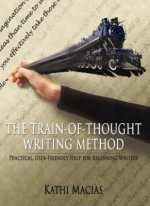 *Adapted from THE TRAIN-OF-THOUGHT WRITING METHOD: Practical, User-Friendly Help for Beginning Writers by Kathi Macias (AuthorHouse, 2005).
*Adapted from THE TRAIN-OF-THOUGHT WRITING METHOD: Practical, User-Friendly Help for Beginning Writers by Kathi Macias (AuthorHouse, 2005).
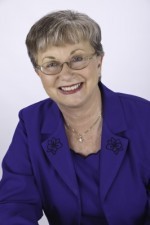 Kathi Macias is a multi-award winning writer who has authored nearly 40 books and ghostwritten several others. A former newspaper columnist and string reporter, Kathi has taught creative and business writing in various venues and has been a guest on many radio and television programs. Kathi is a popular speaker at churches, women’s clubs and retreats, and writers’ conferences. She won the 2008 Member of the Year award from AWSA (Advanced Writers and Speakers Association) and was the 2011 Author of the Year from BooksandAuthors.net. Her novel set in China, Red Ink, was named Golden Scrolls 2011 Novel of the Year and was also a Carol Award Finalist; her October 2012 release, Unexpected Christmas Hero, was named 2012 Book of the Year by BookandAuthors.net. She has recently taken the position of Senior Vice President of Acquisitions for Elk Lake Publishing. Kathi “Easy Writer” Macias lives in Homeland, CA, with her husband.
Kathi Macias is a multi-award winning writer who has authored nearly 40 books and ghostwritten several others. A former newspaper columnist and string reporter, Kathi has taught creative and business writing in various venues and has been a guest on many radio and television programs. Kathi is a popular speaker at churches, women’s clubs and retreats, and writers’ conferences. She won the 2008 Member of the Year award from AWSA (Advanced Writers and Speakers Association) and was the 2011 Author of the Year from BooksandAuthors.net. Her novel set in China, Red Ink, was named Golden Scrolls 2011 Novel of the Year and was also a Carol Award Finalist; her October 2012 release, Unexpected Christmas Hero, was named 2012 Book of the Year by BookandAuthors.net. She has recently taken the position of Senior Vice President of Acquisitions for Elk Lake Publishing. Kathi “Easy Writer” Macias lives in Homeland, CA, with her husband.
September 29, 2014
What is Truly Passionate?
When a man kisses a woman—and the two care about each other in an amorous way—well, we’re most likely guaranteed some sweet magic. Maybe even some bolts of lightning. And we women never tire of experiencing or watching or reading about those dreamy moments when a man and woman feel those first stirrings of attraction, affection, and then love. However, in many of today’s modern novels, the romantic scenes go far behind an ardent kiss.
So, what sets the inspirational romance apart from the others when it comes to those scenes of passion? First of all, writers and readers of inspirational romances are not saying that these fiery feelings aren’t being played out in their own marital beds. However, they are saying they don’t want to be peeping toms in someone else’s boudoir. They have discernment for what is meant to be enjoyed and a healthy respect for what is meant to be private.
These same readers know their minds and hearts—they are more satisfied when the hero and heroine struggle toward real love, rather than merely give in to lust. Charlotte Bronte’s masterpiece, Jane Eyre, is one of the most wildly passionate love stories ever written, and yet we never read about anything more intimate than a kiss.
Also, like in the novel, Jane Eyre, the story encourages readers to consider the whole of a person—which includes the soul rather than just mere flesh. This novel reminds us that we are not only in great need of human affection and love, but that we also desire to be connected to Someone who is greater than ourselves—the One true source of all of that love.
On the other hand, if a story revolves around a hero and heroine who are consumed by lust-filled thoughts and erotic behaviors, well, let’s just say, these kinds of mental images aren’t going raise the reader to any lofty ideals. Truly, lovers of inspirational fiction want to go beyond the mere desires of the body. They want to know there is purpose to their existence and meaning to life. They want to be roused to the passions of goodness and decency and honor. And if a hero and heroine experience temptations and transgressions—and humans are riddled with it—then they also want light and hope and redemption.
Those same readers know that the most romantic hero—one who is truly swoon-worthy—is the one who can set his own desires aside and think of the good of his beloved. That is the measure of a real man. Those are the qualities of a truly attractive and desirable hero.
As an inspirational romance author, you might wonder how I write those romantic scenes so they will be passionate without being salacious. When do I stop the kiss before it gets too hot for the page? Well, I’ve had a general rule that has always worked for me. If I can give my novel to my daughter or offer it as suggested reading to a friend’s grandmother to read without worry that I will offend, and if I feel I have truly entertained as well as inspired the reader, then I have succeeded in finding the right balance. Then I have searched for and found what is admirable—what is good and lovely and beautiful. And yes, what is truly passionate.
[image error] Enter to win a copy of Anita Higman’s novel,
A Marriage in Middlebury!
Do you have a question or a comment about romance and inspirational fiction for Anita Higman? Post your question or comment below, and you’ll be entered to win a signed copy of one of Anita’s latest novels, A Marriage in Middlebury. Two lucky winners will be randomly chosen from the entries. This giveaway will end on October 6, 2014.
[image error]Best-selling and award-winning author, Anita Higman, has thirty-nine books published. She’s been a Barnes & Noble “Author of the Month” for Houston and has a BA in the combined fields of speech communication, psychology, and art. Anita loves good movies, exotic teas, and brunch with her friends. A Marriage in Middlebury is one of her latest novels and is available at Amazon. The sequel, A Matchmaker in Middlebury, is a novella available for Kindle download.
Please visit her website at www.anitahigman.com and drop her a note by clicking the “Contact Me” button.
September 22, 2014
Punctuation Day Contest
Since a significant portion of my Proofreading Secrets of Best-Selling Authors has to do with punctuation, I am hosting a contest in honor of National Punctuation Day, which is on September 24.
The prize will be one item (up to $25) from http://www.cafepress.com/+punctuation or http://www.cafepress.com/+punctuation+jewelry. Two winners will be chosen at random from all the entries.
To enter:
Go to the Spread the Word page of the Secrets of Best-Selling Authors website. You will get one entry for each thing on that page that you do. (Be sure to e-mail assistant[at]kathyide[dot]com to let me know what you did.)
Go to the Just for Fun page. You’ll receive five entries for every typo sighting you submit to assistant[at]kathyide[dot]com.
You may enter as many times as you wish.
Deadline to submit entries for the contest is September 30. I will announce the winners during the first week of October.
September 15, 2014
How to Increase Book Sales without “Selling”
Have you ever read a tweet or seen a Facebook update from an author who is literally begging for people to buy his or her book? Screaming “BUY MY BOOK!” on social media doesn’t help sell books. In fact, that tactic may not only get you unfollowed and unfriended, it can hurt your credibility.
So what is a good way to sell books? One of the best ways authors can increase book sales is by developing an effective author platform.
What is an Author Platform?
Just like a speaker’s podium or a performer’s stage, an author platform places authors in a position of high visibility. It is basically the number of people an author can influence at any given time. This includes blog subscribers, e-mail list members, Twitter followers, Facebook friends and Page likes, etc., plus offline connections, such as past attendees of an author’s speaking engagements and those who have attended book signings.
Why is an Author Platform important?
More books are being published today than any other point in history. Because traditional publishing is so expensive, editors and agents are looking for authors with a built-in audience to help assure enough sales to cover their costs. Self-published authors also need a means to get the word out about their work.
How does an author build a platform?
One of the easiest ways to build a platform is to select a topic of interest that is relevant to your readers and create online and offline content centered on that topic. Once you’ve determined your topic, the next steps are to position yourself as an expert in that field, build a community of those interested in that topic, and, ultimately, inform your audience about your products and services.
Build a relationship with your target audience, often referred to by the online marketing community as a “Tribe.” This group consists of readers and listeners who have chosen to follow you because you provide valuable information about a topic they are interested in learning more about.
Your “tribe” gets to know you through the content you provide. And as they get to know you, they begin to like you. Once they like you, they develop trust in you, and they will be far likely to do business with you (i.e. purchase your books, products and services) than they would a stranger. I call it the Know-Like-Trust strategy.
How do I find my “topic of interest”?
A topic of interest is basically the foundation upon which you build your platform. The topic you use to develop your platform should be something you’re knowledgeable about, passionate about, something that draws a large enough audience to be profitable, and something broad enough to provide opportunity to create a lot of content yet narrow enough not to be overwhelming. All those criteria can be discovered via thorough market research.
For example, my personal topic of interest is marketing for Christian writers, so I blog about that topic, create social media updates about it and give presentations on that topic. It is broad enough to provide a wealth of material but narrow enough to be of interest to a specific group of people—Christian writers who want to learn more about marketing.
If you’re a nonfiction writer, then choosing your topic of interest is easy. For novelists, it’s a bit trickier.
Ways novelists can discover a topic of interest to build a platform around
The following is a list of brain-storming starters to help you choose a topic of interest for building your author platform. You don’t have to use all of these—just find something that clicks with you and go from there.
Theme or Life Issue—Most novels have a theme running through them and sometimes the story includes the struggle and solution of a specific life issue, such as addiction, marital problems, spiritual warfare, etc. This theme may not be in all of your books, but it should be something you have some credentials on. This type of topic is very common for nonfiction writers to build an author platform around.
Setting/Culture/Historical Era—Periods and places are fascinating to learn about, and almost no matter where or when you set your novel, there will be a group of people who love it. There is a huge number of Civil War buffs, and those who are passionate about that time travel, read, listen and absorb everything they can about it. Creating content around information you’ve learned through researching your novel will attract this group, giving you a ready-made community in which to market your Civil War novels.
Writing Craft—A lot of people have “Writing the Great American Novel” on their bucket list. Sharing what you’ve learned through training and experience is a great way to build a following. And when it’s time to promote a new book you’ve written, those whom you’ve helped will be first in line to buy it. Kathy is a great example of someone who has built an author platform by generously sharing information about the craft of writing and editing.
These are just a few ideas to help you discover your own platform foundation.
You have a topic of interest—now what?
Once you’ve picked your topic of interest, position yourself as an expert in that area through blogging, social media updates, videos, in-person presentation, podcasting and hosting webinars. The key is to keep your posts and profile updates relevant to your target audience and to always provide valuable, useful information about that topic. People are looking for solutions to problems, and when they realize you are providing the solutions they are seeking, they will flock to you. (Tip: Conduct market research to learn what problems they are seeking answers to.)
Develop a content marketing strategy that includes your blog, updates to relevant social media profiles, podcasting, informational videos and in-person presentations, and your author platform will begin to grow quickly. You may also wish to supplement your online marketing efforts through traditional media interviews, advertising and press releases.
Always direct traffic to your author website. Because social media and external blogging sites typically don’t grant you full control (read the terms of service), it’s vital to own your own domain and use your own website as your marketing hub.
Make sure your blog is embedded into your website in order to bring traffic to your site, rather than an external blogging platform. Then, when site visitors come to your site to learn more about the topic of interest, have a lead-capture system in place in order to add them to your email list. If you don’t have a system to collect emails of site visitors, then all the content creation efforts will have been in vain, because, if developed and used properly, an email list is the best sales tool an author can have.
An e-mail list is where the magic happens when it comes to online marketing. You can give subscribers exclusive content, unavailable anywhere else within your web presence. And, because your subscribers have literally given you permission to market to them by opting into your list, you can promote your books to them there.
To learn more about building an author platform, marketing with your blog and social media, capturing leads and using email to connect with your audience, visit Marketing For Christian Writers and subscribe to the blog, podcast or sign up for one of our free e-courses.
 Linda Fulkerson has been involved with online marketing for over 15 years. She is the former director of digital services for the largest media firm in Central Texas and now owns her own digital services/marketing agency in Morrilton. Linda is a blog coach, digital marketing specialist, and award-winning photographer. She presents workshops on Blogging, Social Media and Marketing for writers and for small businesses.
Linda Fulkerson has been involved with online marketing for over 15 years. She is the former director of digital services for the largest media firm in Central Texas and now owns her own digital services/marketing agency in Morrilton. Linda is a blog coach, digital marketing specialist, and award-winning photographer. She presents workshops on Blogging, Social Media and Marketing for writers and for small businesses.
September 8, 2014
Secrets of Best-Selling Authors Website Has Launched
Last May, I celebrated the release of my new book, Proofreading Secrets of Best-Selling Authors, with a cyber party. Some of the multi-published authors featured in the book were online for the event. During the party, I debuted my new website, Secrets of Best-Selling Authors. Let me give you a “tour” of this new site.
On the Secrets of Best-Selling Authors website, I provide insights into the exciting world of the publishing industry. The “Secrets of Best-Selling Authors” book series will feature tips I’ve picked up as well as suggestions from some of the successful multi-published authors I’ve met over the years. The Home page lists all the upcoming titles in the “Secrets” series that will contain these tips.
The “Spread the Word” tab contains a document with posts you can share on Facebook and Twitter to get the word out about the site and the book series.
We’ve all seen typos and mistakes in printed material. What are some of the typos you’ve found? If it was funny or entertaining, why not share it! On the “Just for Fun” tab, you can submit a “typo sighting” you’ve caught somewhere—in a church bulletin, a restaurant menu, or even in your own writing.
The “Resources” tab has a list of helpful resources for authors and editors, including professional organizations, books, and websites.
If you don’t already have a copy of Proofreading Secrets of Best-Selling Authors, you can visit the “Store” page for a link to order a copy through Amazon or Barnes & Noble.
I hope you’ll check out my new website. Look for the next book in the “Secrets” series in 2015. And please feel free to contact me if have feedback, comments, or questions.
September 1, 2014
3rd Annual “Promising Beginnings” Christian Writers’ Contest
Because I believe in the power, impact, and influence of Christian writers’ conferences, and the Mount Hermon conference in particular, I am holding a contest again this year in which the prize is a full scholarship to the 2015 Mount Hermon Christian Writers Conference (an $897 value!).
There is NO FEE to enter this contest. It is open to both published and unpublished writers, regardless of whether you’ve previously attended a Mount Hermon conference.
SUBMISSION DETAILS
First five pages of an unpublished book manuscript (self-published OK)
(Does not have to be a completed manuscript.)
(Do not send more than five pages, even if the last page ends in mid-sentence.)
Fiction or nonfiction (any genre except poetry)
For YA or adult readership (no children’s)
Book does not need to be overtly Christian but must have a Judeo-Christian worldview
Must be written in English (If foreign or fictional words are used, they need to be properly
formatted and the meaning has to be understandable within the context.)
Must follow the formatting guidelines below
There is no limit to the number of entries that may be submitted, but each entry must be sent separately.
Deadline for submission is November 30, 2014.
(Entries received after midnight November 30 will not be considered.)
JUDGING
Submissions will be judged on the quality of the writing, including:
intriguing opening “hook”
appealing tone/style
good flow/pace/smoothness
clarity, ease of readability, tight writing
application of professional writing techniques
cleanness (without typos, inconsistencies, or errors in punctuation, usage, grammar, and spelling)
THE PRIZE
The winner of this contest will receive full payment of conference registration, meals during the conference, and economy lodging forthe Mount Hermon Christian Writers Conference, held in the Santa Cruz Mountains near San Jose, California, March 25–31, 2015. For details about the conference, visit http://mounthermon.org/event/361.
The winner will be notified by e-mail no later than January 15, 2015. After that, I will post an announcement on my blog with the winner’s name, the working title of the submission, and the information provided about genre and target readers’ age range. Entry in this contest indicates your permission for me to post this information.
ENTRY FORMAT
Submissions must be formatted according to the following guidelines:
All margins 1 or 1¼ inch
Times New Roman 12-point font
Double-space all text. Do not allow extra space between paragraphs. (Take out automatic paragraph spacing.)
Using the header feature, all pages should have your first and last name (real name, not pen name), followed by a slash, then your e-mail address, all flush left, and a running page number in the right corner.
At the top of the first page, type the working title of your book in ALL CAPS. If you have a subtitle, type that in Initial Caps on the next line. Two double-spaced lines down from that, type “By” followed by your name (or pen name). Two double-spaced lines down from that, “Chapter 1” (or “Chapter One” or “Prologue”). On the next line, put the chapter title (if it has one). This should all be centered. Start text two lines down from that.
For all other text, use left alignment. (Leave right margin “ragged.”)
Indent the first line of each paragraph ½ inch (using the tab key or automatic hanging indentation).
The filename should be your last name, then an underscore (_), then the working title of your entry. (If the title is long, just the first few words).
SUBMISSION INSTRUCTIONS
E-mail your entry to me, Kathy Ide. (If you don’t have my e-mail address, you can use the Contact page of my website.)
Put “MH Contest” in the subject line. In the body of the e-mail, please include:
Your name
E-mail address
Working title of the manuscript
Genre
Target readers’ age range
How you heard about this contest
RECOMMENDATION
To give your entry the best chance of winning, you may want to consider having your writing professionally critiqued, edited, and/or proofread. (NOTE: This is only a suggestion; it is not a requirement for submission to the contest.)
To find a high-quality Christian editor, feel free to check out the Christian Editor Connection and fill out the form for Authors Seeking Editors. Or go to the Critique section of the website to request an overall critique.
NOTE: This contest is not sponsored by the Mount Hermon conference, but it is offered with their permission and full support. (If you would like to contribute to this contest, please let me know. I would love to be able to offer more than just one scholarship!)
If you have any questions, e-mail me. (If you don’t have my e-mail address, you can use the Contact page of my website.)

